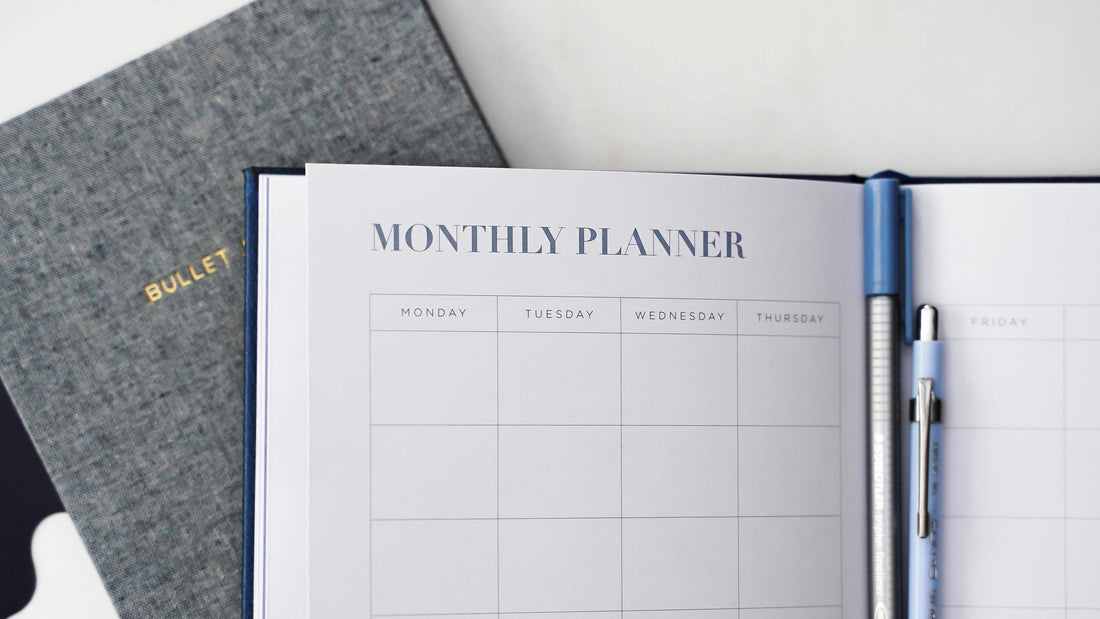
How to Plan a Month of Real Estate Content in One Afternoon
As a real estate agent, your schedule is already packed — juggling showings, client calls, open houses, and closings leaves little time for marketing. But in today’s market, visibility is everything. If you're not consistently showing up online, you're missing opportunities to build trust, stay top-of-mind, and attract new leads.
The good news? You don’t need to spend hours every day to maintain a professional and engaging presence on social media. With a bit of structure, you can plan an entire month’s worth of content in just one afternoon. Here’s how:
Step 1: Pick Your Content Pillars
Start by identifying 3–5 categories you’ll post about regularly. This helps keep your content consistent while giving you a variety of topics to rotate through. For example:
- Buyer Tips
- Seller Education
- Local Highlights
- Design Inspiration
- Behind-the-Scenes/Personal Brand
Having clear categories also prevents the “what should I post?” spiral each week.
Step 2: Map Out Your Weekly Schedule
Decide how often you want to post. We recommend 3–4 posts per week to stay visible without burning out.
Here’s a simple weekly structure you can repeat:
- Monday: Market Insight or Buyer Tip
- Wednesday: Listing Highlight or Seller Education
- Friday: Lifestyle or Personal Brand Post
- Weekend (Optional): Open House Reminder or Home Tip
Having a loose framework makes content creation faster and more focused.
Step 3: Brainstorm Specific Post Ideas
Now it’s time to fill in the blanks. Take each content pillar and write down 4 post ideas for each — that gives you 20+ post ideas for the month.
Need help getting started? Here are a few ideas:
- “3 Mistakes First-Time Buyers Make (And How to Avoid Them)”
- “What Your Zestimate Really Means”
- “How to Prep Your Home for Sale in 48 Hours”
- “My Go-To Coffee Spot in [Your Town]”
- “Before + After: My Client’s Home Transformation”
Step 4: Batch Your Visuals
Gather your photos and videos all at once. Use past listing photos, behind-the-scenes shots, testimonials, or stock imagery (just make sure it's on-brand). You can also take a few casual iPhone photos or film quick Reels in one sitting.
Pro tip: Organize visuals in folders by post type (e.g., “Buyer Tips,” “Just Sold,” “Local Spots”) to make scheduling easier later.
Step 5: Write Captions + Schedule It Out
Once you’ve got your ideas and visuals, sit down and write your captions. Keep them clear, informative, and use your authentic voice. A great caption should do one (or more) of the following:
- Educate
- Entertain
- Inspire
- Drive engagement or action
Use tools like Later, Planoly, or even Canva’s content planner to schedule everything so it runs on autopilot.
Bonus: 5 Underrated Strategies That Make a Big Difference
1. Group Content by Buyer Readiness, Not Just Topic
Instead of planning only by topic (buyers, sellers, etc.), organize content by where someone is in their journey — awareness, consideration, or decision-making.
This helps you speak to your full audience:
- Awareness → Neighborhood spotlights, real estate myths, fun reels
- Consideration → Financing tips, how-to guides, what to expect in escrow
- Decision → Testimonials, sold stories, "why work with me" posts
It’s a subtle way to nurture leads without sounding like a constant sales pitch.
2. Turn Your DMs and Client Questions Into Posts
Scroll through recent DMs, client texts, or email questions — these are goldmines for content that’s actually relevant to your audience. If one client asked, 10 more are wondering.
Turn them into posts like:
- “Real question from a client this week...”
- “Let’s clear this up: what happens after your offer is accepted?”
- “Yes, your Zestimate is off — here’s why.”
3. Time Your Content With Real-Life Local Events
Go beyond generic holidays and anchor your posts to real-life, hyper-local timing. Think:
- When school calendars go live (timing for family buyers)
- Daylight Saving changes (remind sellers to update listing photos)
- Local permit season opens (great time to post about ADUs or home renos)
- Municipal election dates (tie into neighborhood development content)
This shows you're tuned in and gives your content more weight.
4. Have 3–5 Evergreen “Swap-In” Posts Ready to Go
Prepare 3–5 evergreen posts that you can plug in anytime — no tie to dates, listings, or seasons. Think of them like your emergency meals in the freezer.
Example ideas:
- “Why I became an agent”
- “The 3 most common deal-killers in a transaction”
- “My favorite tools for organizing a move”
When life gets chaotic, these keep your feed active without scrambling.
5. Use CTAs That Match the Clients You Want
Most CTAs default to “DM me!” or “Let’s connect!” Instead, use your captions to subtly drive the kind of clients, listings, or conversations you want more of.
Examples:
- Want more listings? → “Thinking about selling next spring? Save this now.”
- Want first-time buyers? → “Tag a friend who's trying to figure out where to start.”
- Want luxury leads? → “This is what a $2.5M kitchen renovation looks like…”
Your content should quietly train your audience to associate you with the work you want.
Need a Shortcut?
If writing, designing, and posting still feels overwhelming — or you just want to save hours of time — that’s where The Brand Source can help.
We create ready-to-use real estate content that aligns with all the strategies above. That means you can show up online consistently, professionally, and without the burnout.
Explore our monthly calendar and content library here.
The Bottom Line
With a clear structure and just one focused afternoon, you can create 30+ days of content that builds your brand, supports your business goals, and keeps your marketing machine running in the background — while you focus on what you do best.
